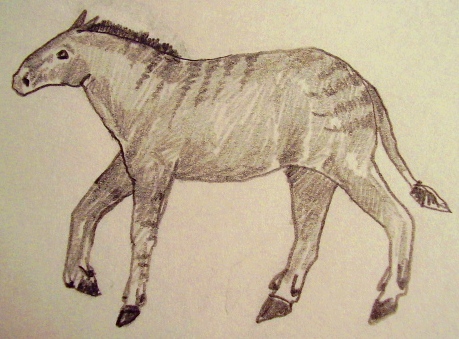
Merychippus, a Miocene equid
The Miocene
was a time of great diversification of Equidae, and as many as twelve
species have been found fossilized in single localities from this time
(MacFadden 1994). This diversification may have been a result of
the intense climate changes and the increased seasonality seen during the
Miocene (MacFadden 1994). The most dramatic change seen in the family
was the development of teeth suitable for grazing, an adaptation to the
changing vegetation of the time (MacFadden 1994). However, this change
was not seen in all species of Equidae: different species ate different
types of vegetation, and some species continued to be mainly browsers (Hunt
1995). An increase in body size and in length of the limbs also occurred
during this epoch, either for better escape from predators
in the open grasslands, or to facilitate migration due to seasonal changes
in vegetation (MacFadden 1994). Accompanying this change was a reduction
or complete loss of the two remainin side toes on the fore- and hindlimbs
(MacFadden 1994). Near the end of the Miocene, many species of Equidae
died out, possibly because of the arid climate of the time (MacFadden 1994).

